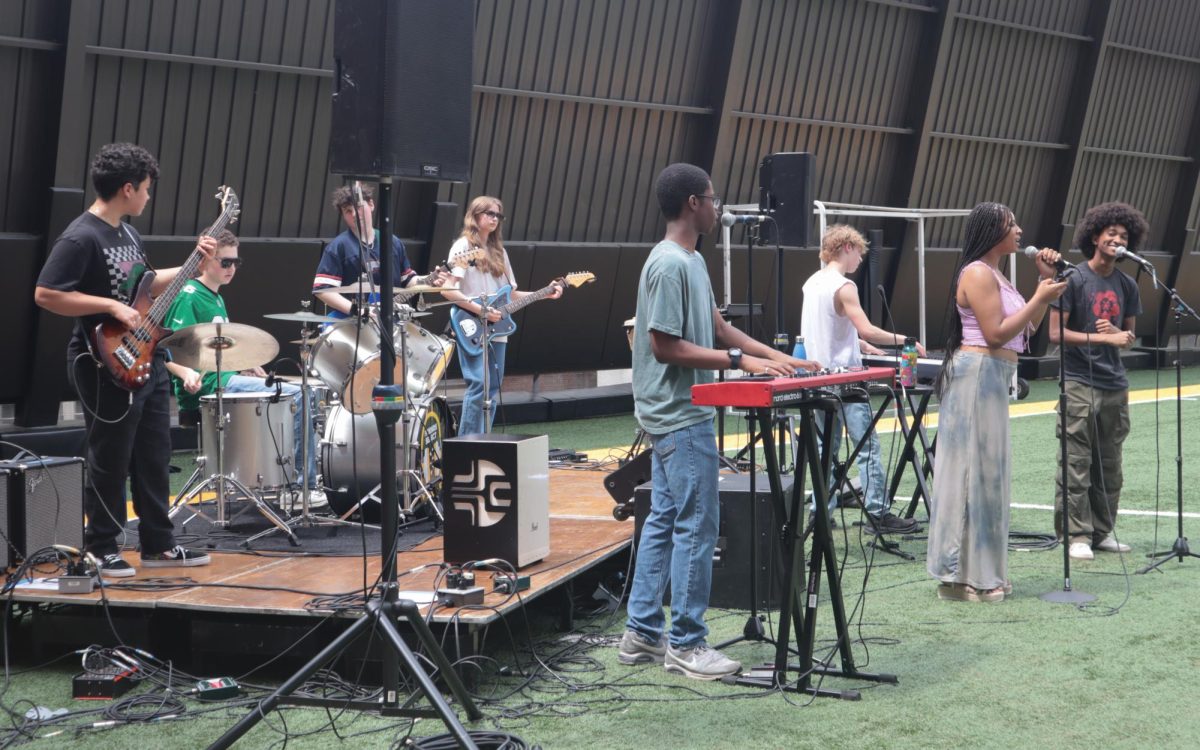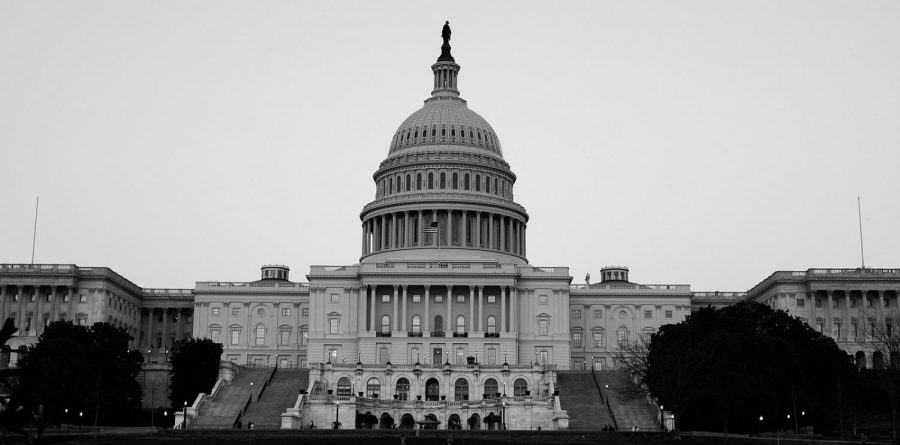Three Takeaways From the Storming of Capitol Hill
On Wednesday, January 6th, a mob of Trump loyalists stormed the U.S. Capitol. The attack followed a rally during which the President continued to espouse false claims about voter fraud in the 2020 Presidential Election. Like many others, I’m still reeling from yesterday’s events. Here are three takeaways I’ve put together — lots of half-baked ideas, even a little optimism — in the wake of the terrorist invasion.
The Far-Right’s Unchecked Use of Social Media
Right around the 2016 election, I remember listening to a pop-country song called “White Trash” that included the following lyrics:
“well if they’d had their way/They’d have thrown us away/Like an empty bottle of wine/We belong sacked up/Stacked on the curb/In their mind.”
As twisted as the song’s logic is, it paints a clear picture of the typical Trump supporter’s mentality. The contorted notion that yesterday’s terrorists could somehow be systematically oppressed when the vast majority of Trump’s base benefit from all kinds of privileges is laid out clearly right there in the song. Where were we? Why didn’t we take notice?
I asked myself the same questions last night as I read a New York Times article that explained that the storming of Capitol Hill was organized on social media. The rioters used far-right social media sites, such as Gab and Parler, to provide each other with specific information. Although I admit I don’t have a detailed understanding of the way these platforms function, it’s plain as day that something should have been done about them long ago; this isn’t the first time Gab has been used to incite violence. Frustratingly, it feels like we can’t rely on authorities to step in and monitor far-right sites in order to prevent further violence. While the shutting down of these sites would lead to the creation of other similar platforms, shouldn’t someone at least monitor what is going on in the virtual gathering spaces of literal terrorists?
I hope that the next administration will take the initiative to protect its citizens by watching the far-right online. If not, I’m tempted to say it’s the job of those of us with more privilege to put ourselves on the line and join these sites, obviously not to subscribe to their beliefs, but to keep ourselves informed and safe. It’s disappointing that citizens might have to be the ones keeping track of possible terrorist threats in their areas, but if the government doesn’t crack down on Gab and Parler, it may be necessary. I admit that this is an idea that may very well be totally ludicrous. It’s certainly not something anyone should go for without being given further advice and guidance, and would require a more in-depth understanding of the ways these sites work than I have. But I felt like I at least needed to put the inkling of this out there to spark some conversation both because something needs to be done quickly and because I’m sick of only participating in safe, inconsequential activism.
The Co-Opting of Civil Rights Language
Let’s circle back to the rhetoric of oppression used by Trump supporters throughout this presidency. Throughout the last four years, but increasingly so since the election in November, the language of the right has borrowed from civil rights activists. It’s a discordant, disturbing combination that reinforces the double standard that was blatantly on display as rioters marched into the Capitol Building. The most well-known case of twisted rhetoric in this vein are the “All Lives Matter” and “Blue Lives Matter” slogans. The troubling thing about these slogans is that, if you’ve been living under a rock, they might seem perfectly sound. In reality, they delegitimize the Black Lives Matter movement in deeply hurtful ways — here is a short CBS piece that goes into more detail.
This trend has only worsened since the election. On Capitol Hill, we saw rioters distorting other rallying cries of the Black Lives Matter movement. Documentary photographer Mel D. Cole shared this video of rioters chanting “I Can’t Breathe” during yesterday’s attacks. Additionally, social media users on both the right and the left are sharing pictures of the woman shot and killed while invading Capitol Hill yesterday with the phrase “Say Her Name.” This slogan was initially used to bring attention to the murders of Black women like Breonna Taylor. It goes without saying that the co-opting of these rallying cries is not just disrespectful to the victims they honor, but damaging to the people and movements they were created for.
The attack on Capitol Hill was in large part fueled by false claims made by the President and his lackeys about the fraudulent nature of the election. Trump has still refused to concede, instead choosing to pull out every expensive, dangerous, illegal trick in his book to prove something that just simply isn’t true. Troublingly, the language (though not the context or legitimacy) that many members of the GOP have used in the past few months echoes Stacey Abrams’ 2018 gubernatorial race against incumbent Georgia governor Brian Kemp. Abrams refused to concede the race, and in a passionate speech marking the end of the 10-day battle after election day, acknowledged that Kemp had won, but said “This is not a speech of concession, because a concession means to acknowledge an action is right, true, or proper. As a woman of conscience and faith, I cannot concede that. But my assessment is the law currently allows no further viable remedy.”
Some conservatives have used the 2018 election in Georgia to compare Abrams and Trump. Abrams dismissed the comparisons in a recent interview that appeared in New York Times on January 4th: “When I refused to concede in 2018, what I said very clearly first was that I acknowledge the legal sufficiency of the election. But I challenged the legitimacy of a system that would silence voters. By contrast, Donald Trump and his adjutants have falsely pushed a narrative of mythical voter fraud that has been rejected by Democrats, Republicans, by conservatives, and liberals, by the Supreme Court. There is no equivalence between us. Those of us fighting voter suppression are right. And those who are working to undermine our democracy by denying agency to American voters are wrong.”
A Ray of Hope
Amidst the violence and lunacy of yesterday’s events, there is one thing that brings me a great deal of hope. The Republican Party has finally had its day of reckoning. There have been countless actions on behalf of this presidency that have warranted a reaction from Republicans over the past four years. Finally, for the first time since the mid-90s (although I suppose it all really begins with Reagan), the “united” GOP front feels like it has been legitimately disrupted.
For years, the Democratic party has contained many smaller, often quite dissimilar, ideologies lumped together under one overarching umbrella. This is why a total of 23 different candidates took the stage for Democratic primary debates last year. Comparatively, the GOP felt like one unstoppable organism, willing to follow Trump like lemmings. For many, including Trump’s right hand man, Mike Pence, the invasion was the long-awaited final straw. Even if former Trump loyalists are only jumping ship to save their own careers, this will still weaken the GOP exponentially more than anything else during Trump’s presidency. As awful as yesterday was, perhaps down the road we will see anything that sowed division in the Trump-era Republican party as a net positive. Predicting the future is a fool’s game, but I could see a path in which yesterday was a turning point in the splintering of the GOP. Maybe there is progress hidden somewhere in the smoke of all this wreckage.
























Olivia Shuman • Jan 8, 2021 at 11:54 AM
– TW for police brutality –
Thoughtful article, C.C..
In relevance to your point about co-opting the language used by the Black Lives Matter movement, I read too that on Wednesday, two Trump supporters reenacted George Floyd’s murder under a church’s BLM banner. Horrifying and completely unsurprising.
(Source: https://www.revolt.tv/2021/1/6/22217635/trump-supporters-reenact-death-george-floyd)